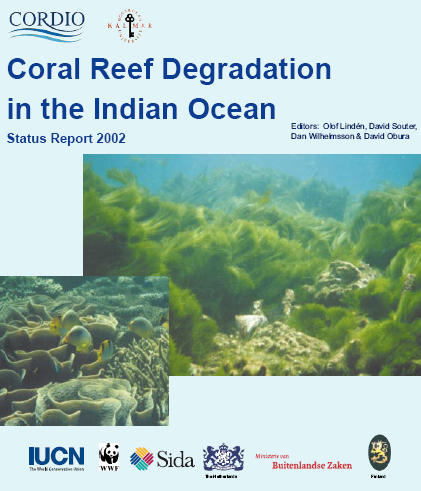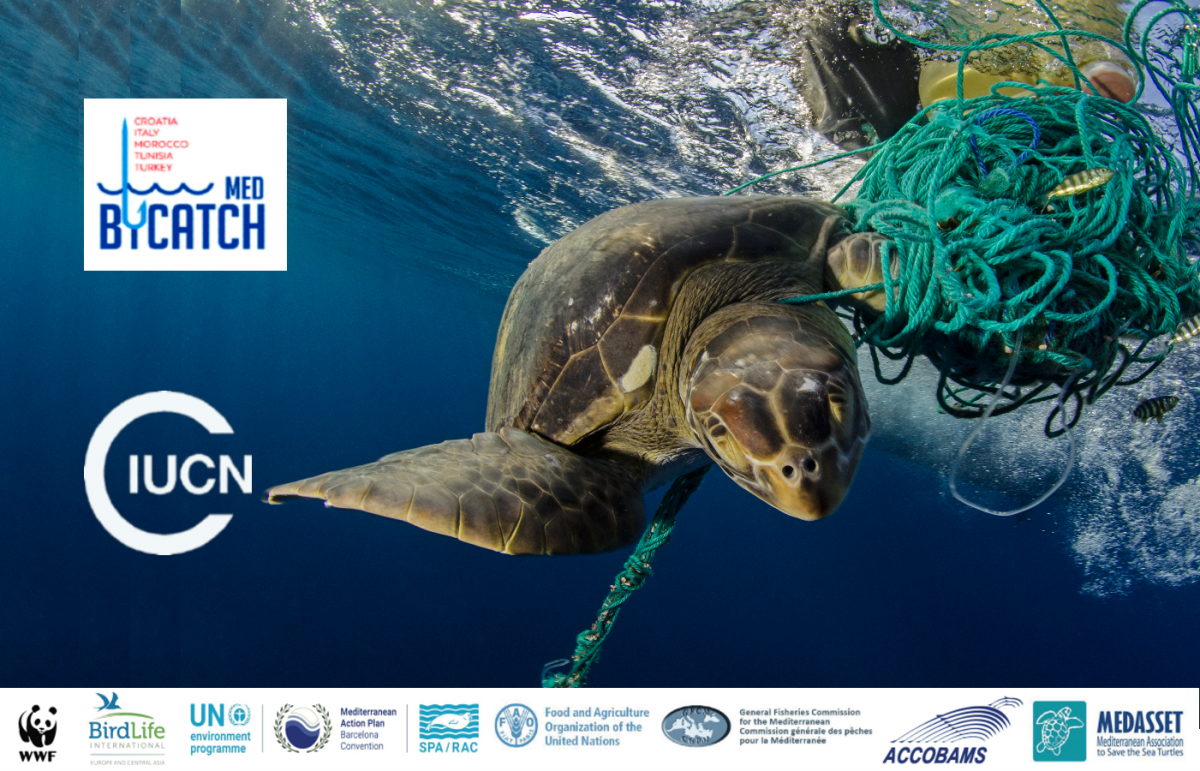CORDIO Status Report 2002
This, CORDIO’s third status report, describes the condition of coral reefs throughout the central and western Indian Ocean and presents the results of several targeted research projects conducted within the last 18 months.

Photo: IUCN/CORDIO
In addition to being magnificent ecosystems full of life and colour, coral reefs are critical to the food security of coastal people in large parts of the world. It has been estimated that around 50% of the fish catch from several countries in the tropics are directly related to coral reefs. The productivity of these ecosystems is phenomenal. One square kilometre of coral reef can provide food for several hundred people per year. In addition the reefs provide shelter for larval stages of a number of different fish and other organisms. Furthermore we know that along coasts where coral reefs have been destroyed, floods and storms easily wash the coastline away. It is therefore with great concern that we learn about the destruction of coral reefs around the planet. It is obvious that a number of human activities are to blame, including fishing using destructive fishing methods including dynamite, and pollution and sedimentation from land. During the last decades it has becom obvious that climate change is a factor playing an increasing role in the stress on coral reefs. If the trend towards increasing temperatures on the planet continues, the background sea surface temperatures is likely to raise to levels where bleaching – a general sign of stress affecting corals – will become regular phenomena within a few decades.
A climate related phenomenon; the El Niño of 1998 caused massive coral bleaching, which killed a large portion of the corals on the planet. The Indian Ocean was particularly badly affected by this El Niño and most of the corals in East Africa and in central and northern Indian Ocean bleached and died during this event. Since the early 1990s Sida, IUCN and a few other organizations such as UNEP has supported capacity building in marine science and management in the East African region. Institutions that took part in this capacity building reported much of the early data showing the extent of the coral bleaching in 1998. It is interesting to note that the flow of data and information regarding the impacts of the El Niño of 1998 came from the East African region to the rest of the world and not the other way around. At the same time as the reported information is worrying indeed, we are convinced that is an encouraging sign of the growing capacity in the field of environmental science at local institutions in the region.
As a result of the region-wide bleaching of 1998, Sida decided to support the CORDIO program, which was launched early in 1999. The purpose of CORDIO, which also was supported by several other Swedish and international organizations, is to obtain data regarding the ecological and socio-economic consequences of the mortality of corals, particularly focusing on vulnerable groups of the coastal human population. This report presents the results of the work conducted under the CORDIO program during the last 18 months. The results make an important contribution to our knowedge of some of the very worrying problems caused by climate change. The scientific assessments carried out under the CORDIO program is done by local scientists and experts in 11 countries around the Indian Ocean. CORDIO is therefore an example of a locally driven regional initiative to provide valuable data for not only the countries of the region but for the world at large. It is important that such networks are maintained as it is only through long-term data series that we are able to assess the state of the environment and the potential threat to the society from environmental change.
We are pleased to endorse this report and hope that it will stimulate national and international efforts to better manage coral reefs. Action is needed at all levels, from assisting local communities with co-management agreements, via national programs for capacity building and strengthening of institutions to improve management and enforcement, to truly global initiatives like managing the trade in coral reefs products or reducing the release of greenhouse gases that are linked to coral bleaching. We need to conserve coral reefs because of their magnificent biodiversity, unparalleled beauty, enormous tourism potential and particularly because well managed reefs can provide food and shoreline protection for hundreds of millions of people around the world.



